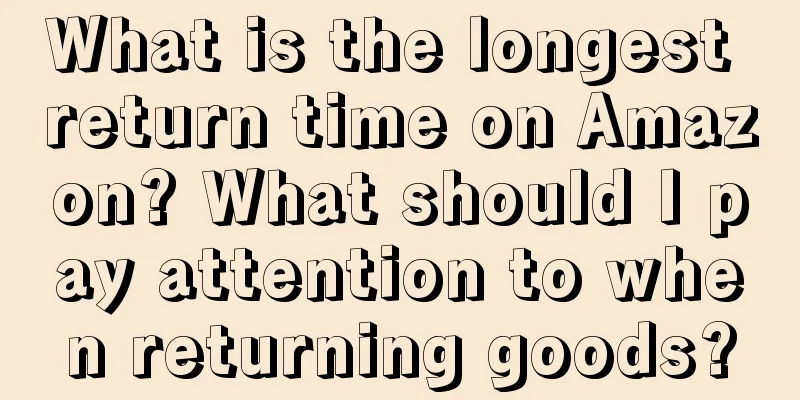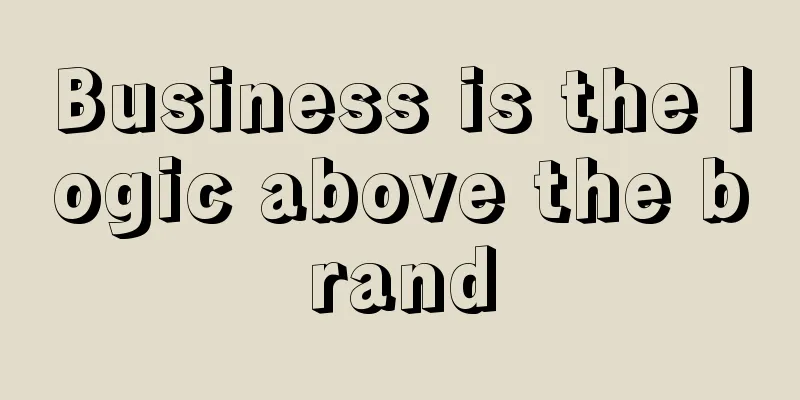How to promote products on Douyin?

When it comes to “grass planting marketing”, people love and hate it; the love is that it can indeed help spread the word about the product and occupy the minds of users; the hate is that many indicators cannot be quantified and are difficult to measure. For example: A boss close to me spent hundreds of thousands of dollars following the proposal of a third-party company, and after promoting it on major social media platforms, he got a few brand keywords and dozens of sales, but nothing happened again. He is still wondering recently whether the dozens of orders were placed by his staff. Based on this situation, and the fact that most small and medium-sized brands have had a hard time in recent years, the logic behind brands spending money has changed seriously. “Don’t spend any money that can be spent optionally, and spend as little money as possible for which the effect cannot be measured.” Obviously, whether there is a scientific method for planting grass, whether data can be used to drive refined operations, and whether it has long-term "compounding" operation capabilities have gradually become the key points of scientific grass planting. 1. ProblemI was deeply impressed by many things in Philip Kotler's "Marketing Revolution 4.0", such as the sentence "Market changes faster than marketing". According to the Golden Circle Principle, to understand how (what), we must start with why (why). Let’s think about it. Why does grass planting fail after being popular for many years? A key reason is that the understanding of grass planting is too simplified, and users have become smarter. for example: Previously, a key formula was popular in the industry: new brand = 5,000 Xiaohongshu posts + 2,000 Q&A posts + top KOLs promoting products + short video platforms. To this day, this formula is still used by some people. Is it effective? “It works in the short term, but not necessarily in the long term”, why? Stimulating the volume in a short time window and making a splash in the market can help brands improve from 0 to 1. However, how long can the effect last? It can be as short as a few days or as long as a month, because consumer brands are currently facing the problem of weak growth. Ultimately, it’s because short-term buzz has not been converted into long-term brand power. In fact, this dilemma also exposes some problems of following the trend of grass-roots content. If we only focus on the content, it will only catch the eye but not the brain. Obviously, grass-roots content is too utilitarian and may not be recommended by the platform, and it cannot reach precise consumers. Coupled with the fact that brands lack the ability to measure the content of grass-planting, it is naturally difficult to answer the questions of whether grass-planting has an effect and how long it will take to produce the effect. In addition, shotgun delivery can easily lead to the failure of "grass-planting". For example, a friend of mine who does advertising always emphasizes ROI every time he promotes something. He thinks that when he promotes something, he must find some accounts with high "conversion effects". There must be no problem, right? But the core is that the "promoting link is broken" and the "search tag" cannot be accumulated. For example: A brand that makes shampoo often releases some short videos of exciting dramas. When the second party (bloggers) produces the content, they will try their best to achieve "seamless integration". Overall, it seems smooth, but it fails to leave a mark in the user's mind. It may seem like an advantage in the short term, but from a full-chain perspective, it is difficult for different brands to coordinate and link their different promotional actions, which will lead to the inability to continuously accumulate and reuse marketing data and crowd labels, and a lack of integrity, globality and sustainability. Many brands still lack the control over the coherence of scenarios, content and products. When I communicated with some brands, they admitted that the effect of seed marketing was good. When asked what was good about it, they could only tell me based on their perceived experience or feedback from individual consumers at a certain stage. For example: When a brand is promoting a product, it will use "secret codes" to guide consumers to go to the store, collect coupons and place orders. A product that originally cost 168 yuan may only cost 98 yuan through the secret code. However, consumers come for the marketing videos, and after taking advantage of the product, they will never make a second purchase. There is nothing wrong with this strategy, but it is not scientific. You can only judge the nature, but the degree cannot guide the strategy and specific practice of planting grass. Next time you will still invest blindly without rhythm and planning. In addition, there is also the situation of "sowing without harvesting". These brands have only been using TikTok for a short time, and their marketing departments are not good at forming a closed loop with the three elements of "live streaming, short videos, and shopping malls." They know it is important and a trend, and they also know that they need to set aside some money every month to plant grass and invest in KOLs, but they just wait for users to place orders on their own while they are browsing. You will find that the backend tags are filled with a lot of brands, but they don’t know how to use self-broadcasting or expert broadcasting to help collect. The best way is to use Qianchuan to deliver to people who have interacted with the expert’s video after the expert has promoted it, and trigger a second conversion. There are also various issues about "planting grass details", which are not listed one by one. The key to all this is that the understanding of scientific planting grass is not deep enough, and there is no systematic understanding of Douyin's planting grass logic. It is true that although Douyin has a huge number of users and creators, if you cannot establish the "Douyin full-link thinking" and provide products and content in the right scenarios based on interests, then users will not be able to react chemically with the product and it will naturally lose its value. 2. BehaviorGoing back to the logic of grass-planting, the matching of products, content, and scenes is certainly important, but the core of grass-planting should be to first recognize what changes have occurred in the population? Information is generally divided into "active demand and passive demand". Users solve the former through the "search box", and the latter through subscription, recommendation, attention, discovery and other sections. From the underlying logic of netizens' shopping, we can summarize all shopping behaviors in two words: search and browse. What is search? Consumers have clear demands and know what they want. They can directly search for keywords and stores to find corresponding products and choose to buy; or users have problems but don’t know how to solve them, so they search for products or solutions. No matter where consumers search, we can understand customers’ behavior in finding solutions and products as “active demand.” Like: My scalp has been itching recently, and I am trying to replace the "Adolf" shampoo I have been using for a long time. You certainly won't directly look for the name of the new brand of shampoo, but instead search for "anti-dandruff products, anti-hair loss" and other similar content. Therefore, as long as customers search, they will generate "keywords", which can be used as one of the most important "indicators" for analyzing consumer behavior. In the first case, we can dig out the other party's real needs and motivations by designing keywords, and then make targeted product introductions. However, sometimes the matching scenarios and content of keywords are different. for example: If you search for "snoring" on Douyin, many experts will come out to tell you "what to pay attention to when sleeping". There are also some instruments for treating snoring. At this time, you need to match the scene through keywords. For example, snoring + sleeping, snoring + teeth grinding, snoring + stuffy nose, the corresponding contents behind them are all different, so this group of people pay more attention to and directly look for products. The second situation is when there is no clearly recognized product and information is needed to seek help or verify the solution. We can classify it into the "get information" category. For example, what is the most effective way to treat athlete's foot? How to control weight? This indirectly shows that this group of people do not approve of the known methods and want to find a better product to solve the problem. For them, you need to first verify the effect feedback, customer feedback, and product feasibility, and imply that there is no problem with the product, then the other party will pay for it for you. The once popular little white shoes are exactly based on this mentality. Therefore, it can be seen that behind each keyword, there are different groups of people and needs hidden. Their demand levels, solutions, usage scenarios and quality requirements are completely different. Brands must infer the "real thoughts" hidden in their customers' hearts based on the data. More importantly, sometimes consumers may not even be aware of their own needs. They just get a "feeling" from you and then are asked (planted with grass). What is strolling? In the real world, people go shopping when they are bored. The same is true on the Internet. When people are bored, they will open various "APPs" and browse around. Sometimes the purpose is not to buy things, but to kill time. When you see something good and imagine that you don’t have it at home, the probability of placing an order will increase. The essence of all content (interest) e-commerce is to use boring time to sell products. Obviously, “shopping” is the second largest form of product sales after searching, but brands should understand that “shopping” does not necessarily mean buying. To make the brain want to “buy”, you must first attract the user’s “attention” and make her interested. This is the so-called “planting grass”. So what is the key to doing a “shopping” business? The answer is "create content and attract attention". However, while attracting attention, brands must also understand the real needs of consumers behind your content. for example: The scene of "beautiful women dancing and singing in the live broadcast room" attracts many men to watch. It does not necessarily mean that anyone will buy short-sleeved shirts or dresses if the beautiful anchor recommends them; because most of the people watching the dance are boys, and it is good enough if 1% of them give tips. On the contrary, if a beautiful woman demonstrates tea ceremony, potted plants, embroidery and other products through live broadcast or video, even if she does not say anything, someone may take the initiative to ask if they can buy them and how to sell them; because those who are attracted are people who are interested in the products. Therefore, interest e-commerce itself is a connector of goods, scenarios, and content. If you don’t even know what your user base is? What do they care about? How can you create content that attracts them and make them pay for it? Therefore, trying to make money from “shopping” consumers without any positioning is undoubtedly like selling skirts to boys, which is inappropriate. Shopping customers and searching customers are two different shopping groups, and in some cases they also have commonalities, such as interests and concerns. So, how should brands “find the right people”, or what are their characteristics? 3. CrowdBytedance divides the TikTok audience into O opportunity and 5A brand asset audience. O (Opportunity) refers to people who have not established a relationship with the brand within a certain period of time, but are identified as potential consumers by the brand from various dimensions. When the brand decides to expand the total number of 5A people, these people are the main targets. The 5A concept refers to the 5A concept proposed by Philip Kotler in "Marketing Revolution 4.0", namely Aware, Appeal, Ask, Act, and Advocate, which reveals the relationship between users and brands. Specifically, Douyin is defined as A1-A5 based on the closeness of the relationship between consumers and brands, which are:
Each A represents a different key node. A1 represents contact without feedback, A2 represents a group with shallow interest (visiting the brand homepage, liking, sharing, and commenting) but passive acceptance, A3 actively searches, adds to the shopping cart but does not place an order, A4 has already had consumption behavior, and A5 has loyalty to the brand, including repeat purchases and becoming fans of the official account. Among them, which one can you tell is closest to Souguang? It is obviously A3, because their characteristics such as active search intention, in-depth reading habits, completion of short video content, and watching live broadcasts of experts are deeper than the first two. Year-on-year, the proportion converted into consumption behavior is also higher. A5 is a high-quality group that brands pay extra attention to, after all, they have good loyalty. Data from Juliang Cloud Atlas shows that in the beauty and daily chemical industry, the conversion rate of brand A3 people is 20 times that of non-A3 people. In the lead-oriented automotive track, the contribution of A3 people to industry leads is as high as 68.6%, and the conversion effect is more than 15-20 times that of A1 and A2. Therefore, it also shows that grasping the A3 grass-planting crowd is not only conducive to improving the conversion rate, but also can help achieve "brand building" and "content compounding" in the long run. So, where does the A3 data come from? I noticed that Juleliang Qianchuan’s “Zhongcaotong” product will give you some references. Based on maintaining quantity, it can not only help brands improve the efficiency of acquiring A3 people, but also reduce the customer acquisition cost of A3 people, and guide brands on how to invest through the indicators brought by A3. To put it bluntly, it is like the brand promotion advertisements in the past, but it does not focus so much on the "brand promotion level". Instead, it is based on targeting capabilities (city, gender, age, interest, and population group). At the same time, whether it is based on display, clicks, or completion, it adds some A3 population dimensions that you want, that is, an effective combination of brand promotion and conversion. The beauty brand Lancome used a funny video blogger’s comparison of the before-and-after effects of its products as the material for its promotional campaign. As a result, the A3 population rate increased by nearly 350% and the cost was reduced by 81%. I believe that planting grass is nothing more than increasing the "favorite content" of precise users. The reason for ineffective planting grass is mostly because businesses fail to grasp the precise groups and blindly follow others to make "counterproductive" actions, resulting in little effect. Therefore, the premise of effective promotion is not to be busy promoting. We should first grasp the "main contradiction", combine the existing A4-A5 tags, and quietly immerse A3 users through influencers and self-produced high-quality content, so that promotion can play a grafting role. In other words, only by making good use of the huge amount of "data products" can we turn "marketing strategies" into treasures, find the brand's own A3 user tags, and then use these tags to further perform A1-A2 and other actions. 4. Planting GrassThe so-called long-cycle grass-planting is essentially composed of a series of small cycles. The specific links can be divided into "function grass-planting, product breaking the circle, and product mind"; when and how to use these three? When a brand is new and unknown, consumers will base their decisions on reviews (whether it is easy to use, what effects it has, and who is using it). When a brand is well-known, consumers will focus on the brand (how is the brand, and who endorses it). Therefore, for new brands, the key to opening the door to consumer awareness is product strength. Even if old brands launch new products or enter the market, they still focus on products. Many people would ask, "I used to promote products, but why didn't it work?" Zhiyuan found that one of the important reasons was that "there was no clear understanding between products and users, that is, no market analysis was done."
For example, shampoo and skin care products are in the same primary category, but the secondary categories are different. Many brands have been labeling themselves as "primary categories", which can easily lead to internal competition. The correct approach is to find specific advantages, just like the TV advertising in the past few years. (slogan, user associations, category affiliation, technical differences) and then use these as a foundation. Just like, if you are afraid of getting a sore throat, drink Wanglaoji, or use Luhua 5S to press peanut oil, extract your key information and anchor the attributes based on user cognition, so that users can resonate through the blogger's (KOL) short videos. After all, the essence of planting grass is similar to the underlying knowledge of CCTV+ celebrities in the past, except that it is now replaced by experts/live broadcasts/short videos, which go a step further in terms of exposure, reach, conversion, and stimulation. Product function planting: There are four ways to plant grass in the huge engine brand, which are:
During the basic stage, I found that Zhuimi, a cutting-edge Chinese brand focusing on the smart home appliance industry, opened nearly 50 accounts on Douyin in a matrix manner, 90% of which were corporate Blue Vs, half of which were authorized accounts and half of which were official accounts. In addition to winning in terms of quantity, Dreame also has a relatively vertical approach in terms of live broadcast rooms. Among its more than 50 accounts, they are roughly divided into products such as "sweeping machines, floor scrubbers, vacuum cleaners, hair dryers", and there are no less than 10 live broadcast rooms named "washing machines" alone. Many brands will ask, what if I don’t have such a large scale? Then, you can choose to use KOL, mainly saying (what is the product, why choose you, why trust you) and other content. KOL can build trust on the one hand, and penetrate the A4-A5 population on the other. When choosing, you don't necessarily have to choose a large account with 1 million followers. Try to be vertical first and then broad. In many fields, the information sources released by small accounts with 100,000 or 50,000 followers are stronger and more cost-effective. Be sure to look for accounts within the industry. The investment cycle is directly related to the conversion needs that the brand wants. The wide-area Douyin is like Xiaohongshu. It will never be possible to lay out all the content simply, so you have to rely on your own (budget) capabilities, cooperate with influencers, and broadcast by yourself while planting and pulling. Product breakthrough planting: We compare breaking the circle to someone or his work breaking through a small circle and being accepted and recognized by more people. Douyin breaking the circle has the same concept. Based on the user portrait formed by the content released in the first phase, it gradually penetrates into competitors, category users, and even cross-category and scene users. To put it simply, after completing the user portrait around the A4-A5 groups, iterate the keywords based on A3 and penetrate other groups. for example: For a spicy and sour noodle, the key words during the brand product planting period are "delicious, how much does it cost, what does it taste like, who is eating it", then to break the circle, the keywords need to be upgraded to "in which scenarios can it be eaten, who likes it", etc. In the early years, Xiaoxiandun products focused on "weight loss" during the planting period. Later, in order to break the circle, the proportion of "skin care" scene keywords increased to nearly 50%, and it also used "freezing age, health preservation, and pregnancy care" as a prelude. The strategies and methods for planting grass are generally based on cooperation with Star Map influencers, content promotion/services, and dou+. Star Map solves the problem of planting grass content and promotes it based on the influencer's own natural traffic. The latter two are tools based on content amplification, and then use the Cloud Map system to conduct crowd asset analysis and management. The deployment here is not just about 2-3 influencers working together, but at least a scale of 50 or 100+ is required (requiring a large budget), but this budget is not entirely for the purpose of breaking the circle, many influencers can hang links and also have a certain ROI return. For an excellent team, the Star Map segment can achieve profitability, thus truly realizing the "integration of product, sales and effect". For the evaluation of influencers, we can focus on indicators such as likes, clicks, interaction rate, completion rate, etc. In-depth attention can also be paid to "age, mobile phone price distribution, and population distribution". For brands, the breaking circle stage is very important. After all, the behaviors generated by video interactions will affect the total quality of brand population assets. There are also some brand investment experts who, after producing popular videos, deviate from the desired labels and ultimately, with the help of dou+, the conversion is not ideal. Product mindset: The so-called occupying the mind means that when potential users want to buy a product, they will think of you first in their mind. For example, when they think of "cola", people will immediately think of Coca-Cola and Pepsi, and when they think of sparkling drinks, they will immediately think of Yuanqi Forest. In the traditional advertising world, occupying the mind requires "repeated brainwashing." In the short video world, the first task to occupy the mind is "catchy music melodies and dynamic dance beats." Think about it, if people hear the "Neymar victory dance" that was bombarded with hearing at the end of 2022, will they immediately make related gestures? What do you think of when you mention Mixue Ice City? You love me, I love you, Mixue Ice City is sweet... Breaking the mind circle is a process from product selling points to keywords, from keywords to portraits, from portraits to labels, and from labels to penetration. Only by completing one path can you advance. If the brand only focuses on leaving the "mind", it is easy to be backfired by traffic and eventually fall into negative effects such as quality gates and word of mouth. So, how to face various competitors? How to win the hearts of users? I think it requires online and offline cooperation. Online level: Live streaming and repeated outreach to short video KOLs are bound to be scripted. Zhang Dada's series of reverse operations in the early stage have made the popularity of the live broadcast room increase rather than decrease. The online comments can be called the "Customer Service Xiao Zhang" of the celebrity world. This contrast script is one of the means to IP the brand live broadcast and occupy the mind. Offline level: Subway community advertising must have catchy slogans, just like Mioko's Landau, which adapted the French nursery rhyme "Two Tigers" into "Mioko's Landau, Mioko's Landau, cheese sticks, cheese sticks", making it familiar to children. In addition, with a large budget, celebrity endorsements and sponsorship of variety shows are also good choices. At the end of 2022, Huolala used "Cargo Pulling Song 2022" and Cargo Pulling Exercises, inviting celebrities such as Liu Genghong and Cecilia Cheung to participate, which can be said to have used the long-tail effect of mind occupation to the extreme. To summarize: Tik Tok integrates the process of planting and collecting, which is not complicated. Making good use of the Star Map + Cloud Map system can help brands move from product promotion to breakthrough conversion, and the data of the entire process can be tracked and optimized, but the premise is that the brand can do accurate positioning (crowd, label, customer order, category). Author: Wang Zhiyuan, public account: Wang Zhiyuan |
<<: I no longer believe in buying traffic from outside, but can I count on the video account?
>>: Taobao quietly builds a "full range" of content
Recommend
What are the conditions for joining Meikeduo? How is the Meikeduo platform?
If you are familiar with cross-border e-commerce p...
What will it be like to open a store on eBay? How to open a store?
Merchants who do cross-border business on a daily ...
Recognizing user value and transactions
Introduction: The title of this article is concise...
Xiaomi's new copywriting made some people cry
Xiaomi 14 Ultra’s Father’s Day copy “It’s OK, Dad”...
What is the conversion rate of an independent website? How to improve it?
Merchants who run independent websites need to pay...
Can Amazon Middle East do self-delivery? How to do it?
Amazon Middle East Station supports Amazon FBA and...
Amazon launches first writable Kindle
Amazon announced that it will launch a new Kindle ...
"Listen to the advice" of foreigners and dig into Xiaohongshu
Recently, many foreigners have flocked to Xiaohong...
What are the reasons why Amazon does not ship orders?
Now more and more merchants are opening stores on ...
New rules for Douyin: prohibiting holding orders and live streaming of exams
Recently, Douyin issued two new regulations, but f...
From "B-game" to "AI love", why are today's young people in love with "AI"?
Why do young people choose to fall in love with &q...
How does Amazon set up advertising? How does Amazon start?
On Amazon, the world's largest e-commerce plat...
In 2023, who will make a fortune in the beauty industry?
This article starts with the development of KOLs i...
"Rose Story" and "Moyuyunjian" became popular during the 618 period. How can brands take advantage of the big drama IP and big promotion IP?
Why did the 618 shopping festival see a combinatio...
How does a cross-border e-commerce company open a store and sell goods? What is the process?
Nowadays, doing e-commerce in China is gradually b...









